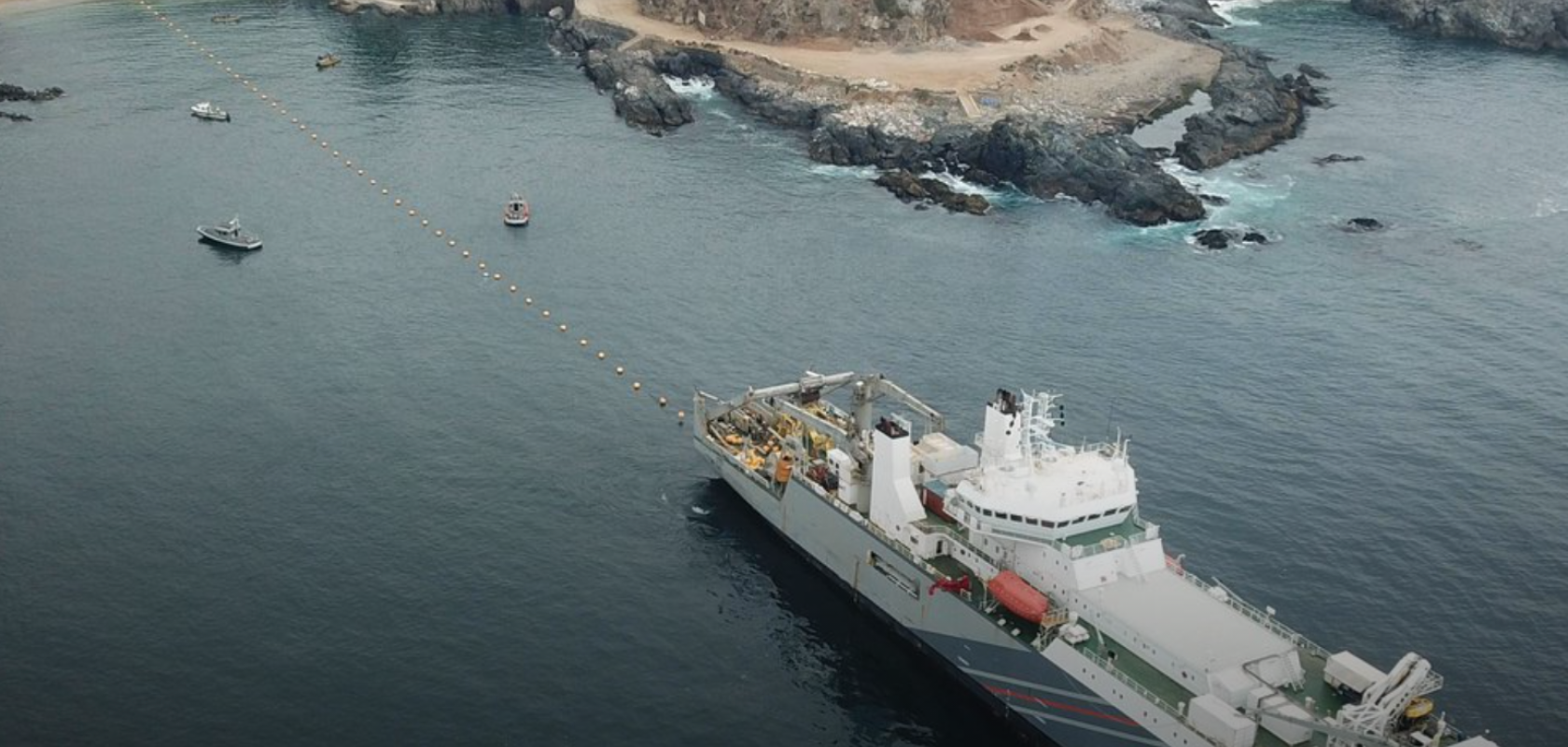A team of seismologists at the California Institute of Technology (Caltech), in partnership with optics experts at Google, have developed a method to use existing subsea cables to detect earthquakes.
With more than a million kilometers of fibre optic cable under the planet’s oceans, scientists have been working for years to find a way to use this telecommunications infrastructure to monitor seismicity. Previous efforts have used sophisticated scientific instruments and/or existing dark fibres.
The team at Caltech, led by assistant professor of geophysics, Zhongwen Zhan, have devised a way to analyse the light traveling through existing and functioning submarine cables to detect earthquakes and ocean waves without the need for any additional equipment.
Funded by the Gordon and Betty Moore Foundation, the research is detailed in the journal Science, in which Zhan said: ‘We believe this is the first solution for monitoring seismicity on the ocean floor that could feasibly be implemented around the world. It could complement the existing network of ground-based seismometers and tsunami-monitoring buoys to make the detection of submarine earthquakes and tsunamis much faster in many cases.’
To make optimal use of subsea networks, operators monitor the polarisation of the light that travels within the fibres. Like other light that passes through a polarising filter, laser light is polarised—meaning, its electric field oscillates in just one direction rather than any which way. Controlling the direction of the electric field can allow multiple signals to travel through the same fibre simultaneously. At the receiving end, devices check the state of polarisation of each signal to see how it has changed along the path of the cable to make sure that the signals are not getting mixed.
The Caltech researchers focused on the Curie Cable, which stretches more than 10,000km along the eastern edge of the Pacific Ocean from Los Angeles to Valparaiso, Chile. On land, many factors, such as temperature fluctuations and lightning strikes, can change the polarisation of light traveling through cables. Because the temperature in the ocean remains nearly constant and there are fewer disturbances, Zhan and the team found that the change in polarisation from one end of the Curie Cable to the other remains quite stable over time. However, during earthquakes and when storms produce large ocean waves, this changes suddenly and dramatically, allowing the researchers to easily identify such events in the data.
Using the new technique, the entire length of a submarine cable acts as a single sensor in a hard-to-monitor location. Polarisation can be measured as often as 20 times per second, so if an earthquake strikes close to a particular area, a warning could be delivered to the potentially affected areas within a matter of seconds.
During the nine months of testing reported in the study (between December 2019 and September 2020), the researchers detected about 20 moderate-to-large earthquakes along the Curie Cable, including the magnitude-7.7 earthquake that took place off of Jamaica on January 28, 2020. Although no tsunamis were detected during the study, the researchers were able to detect changes in polarisation produced by ocean swells that originated in the Southern Ocean. They believe the changes in polarisation observed during those events were caused by pressure changes along the seafloor as powerful waves traveled past the cable. ‘This means we can detect ocean waves, so it is plausible that one day we will be able to detect tsunami waves,’ explained Zhan.
The team is now working on a machine learning algorithm that would be able to determine whether detected changes in polarisation are produced by earthquakes or ocean waves rather than some other change to the system, such as a ship or ocean wildlife moving the cable.


